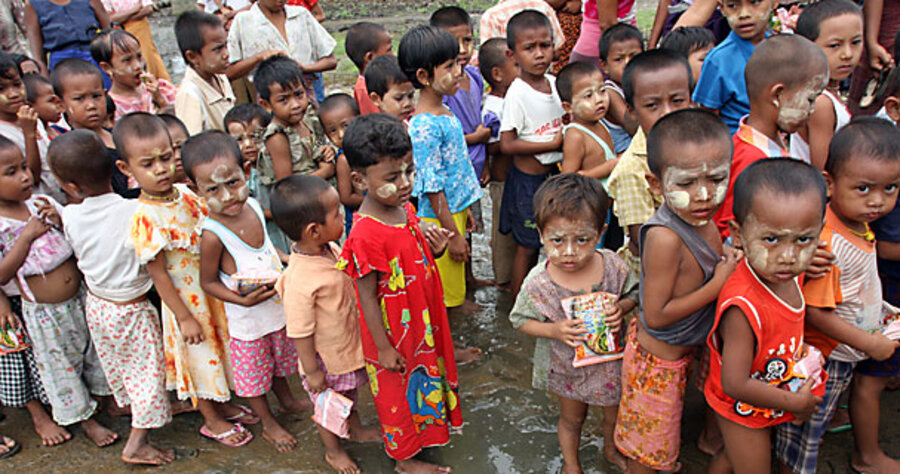Insurer: Weather disasters becoming more frequent
Loading...
The number of natural disasters has more than doubled since 1980, mostly because of a worsening of weather-driven catastrophes, according to a German insurance company.
In its report [PDF], Munich Re, the world's largest reinsurer (that is, an insurance company for insurance companies), said that 400 natural disasters occurred in the first six months of 2008, with 300 of them attributed to extreme weather, such as storms, floods, and heat waves.
This number is in line with a steady increase in the number of natural disasters that the company has tracked since 1980. In the 1980s, the average number of yearly natural disasters was 400. That number increased to 630 in the 1990s and 730 in the past 10 years. The number of geophysical disasters – earthquakes, tsunamis, and volcanic eruptions – increased from the mid-80s to the mid-90s, but has since returned to early-80s levels.
The highest number of recorded natural disasters, 960, was in 2007, the company said.
Ben Block, a writer at the Worldwatch Institute, gives a rundown of the catastrophes we've seen so far in 2008:
So far this year, tornadoes, severe thunderstorms, and massive flooding have crippled the American Midwest. An earthquake in China's Sichuan province killed more than 69,000 people and caused an estimated $20 billion in damages. Cyclone Nargis in Myanmar killed at least 84,000 people and left at least $10 billion in damages. The majority of this year's disasters, 80 percent, are classified as severe thunderstorms, Munich Re says.
While other years have experienced more costly disasters, both overall economic losses and insured losses are higher in 2008 than the average losses recorded in the first half of each of the past ten years. This year's natural disasters have so far caused $50 billion in economic losses and $13 billion in insured losses, compared with $35 billion and $9 billion, respectively, over the past decade. The year of Hurricane Katrina, 2005, was the costliest ever recorded, with nearly $250 billion in combined losses.
Mr. Block goes on to point out that 109 natural disasters have occurred in the United States so far – the highest mid-year tally ever recorded.
Not all agree with Munich Re's assessment. Writing in the Ottowa Citizen, Dan Gardner attempts to dump cold water on what he calls the "worst-case entrepreneurs." The increase in natural disasters, he writes, may well be a matter of perception:
Over the last three decades, populations have grown massively. So has wealth. More people plus more property means more stuff to be insured -- and more stuff to be wrecked by a storm, flood or earthquake and claimed afterward. When the rising dollar value of natural-disaster related insurance claims is held up as irrefutable proof of the damage wrought by climate change, it proves only that the person making the argument is selling something.
The data on the number of natural disasters is a little better, but not much. That's because a natural disaster isn't counted in Munich Re's figures unless people died in it. Rapid population growth has produced more people. More people means more potential victims. Some growth in that number over time is to be expected for that reason alone.
In addition, monitoring of events has improved greatly over the last several decades. There are far more seismographic sensors, more weather stations, more satellites, more government programs for collecting data on events and reporting them. Again, this change alone would inflate the alleged number of recorded natural disasters over time.
It's worth noting here that, despite the increase in seismographic sensors, Munich Re's data does not show a steady increase in geophysical disasters over the past 28 years.
But Mr. Gardner's larger point still holds: you should be cautious accepting any report of a trend at face value without first looking at the way the data was collected. And you should be extra-cautious if someone stands to make money out of it.
But as an insurer, Munich Re has a strong financial incentive to assess risk as accurately as possible. And the company's analysts are not the only ones saying that the weather has been getting wacky. The World Meteorological Organization, for example, has also noted an increase in extreme weather events. And you can bet that their scientists have means of correcting for the types of bush-league sampling biases that Gardner describes.
To be sure, it's impossible to link a single storm, drought, or flood to human activity – although Newsweek's longtime science reporter Sharon Begley says that scientists are getting close to being able to do so.
But as we see the number of severe storms, droughts, floods, wildfires, and heat waves steadily increase along with atmospheric greenhouse gas concentrations, it seems fair to ask whether we should still be calling these disasters natural.





